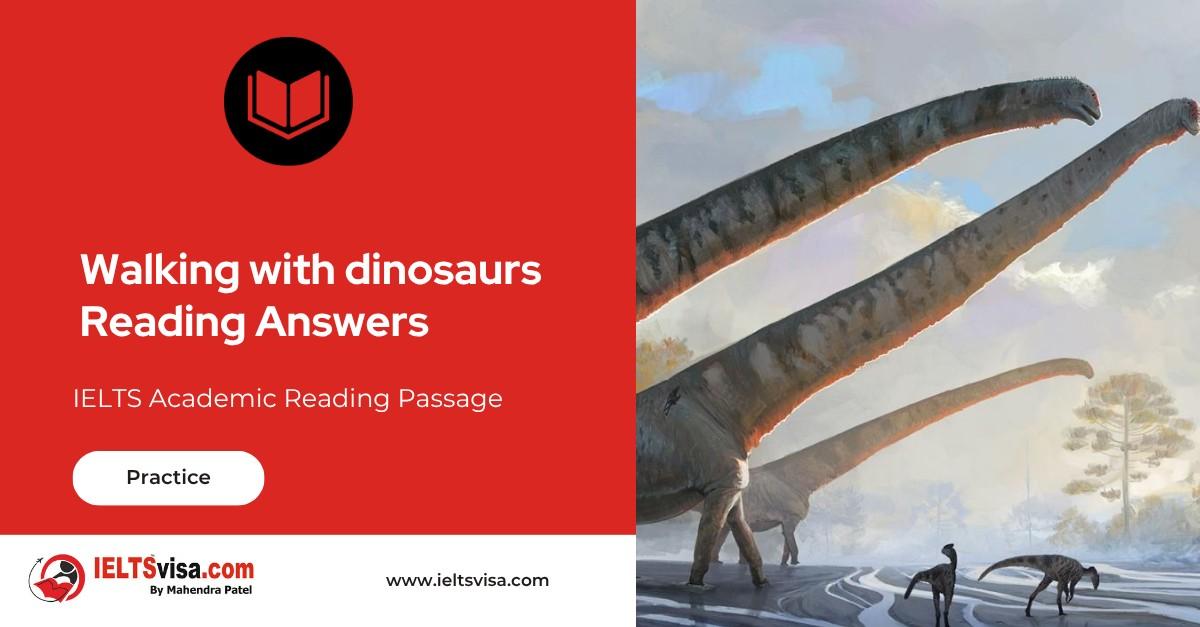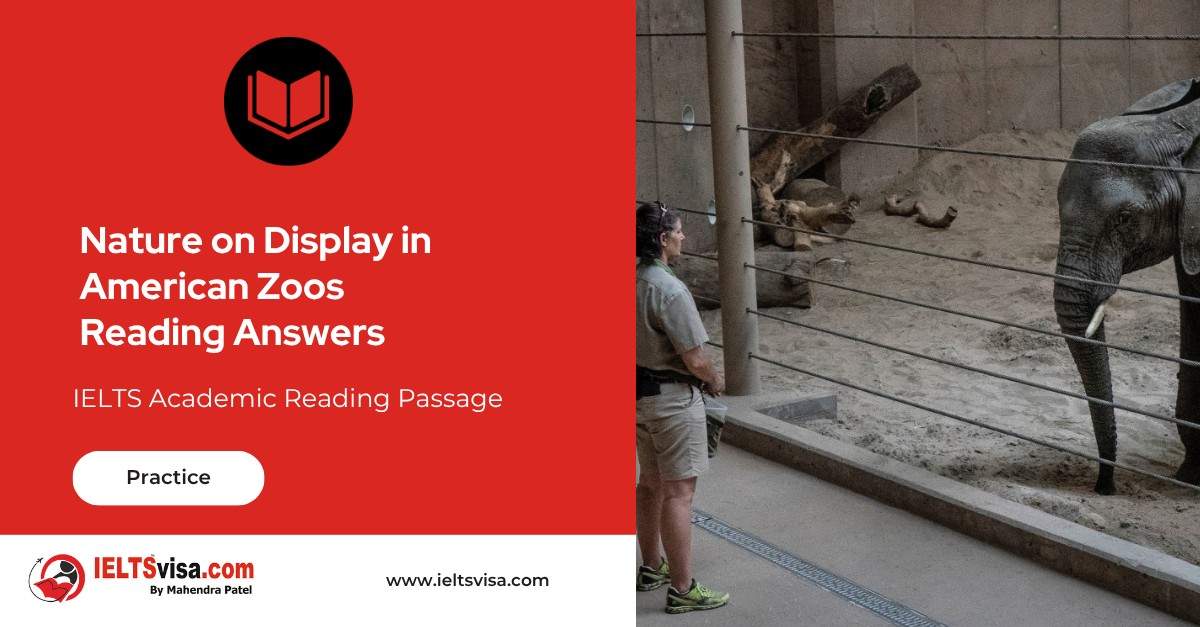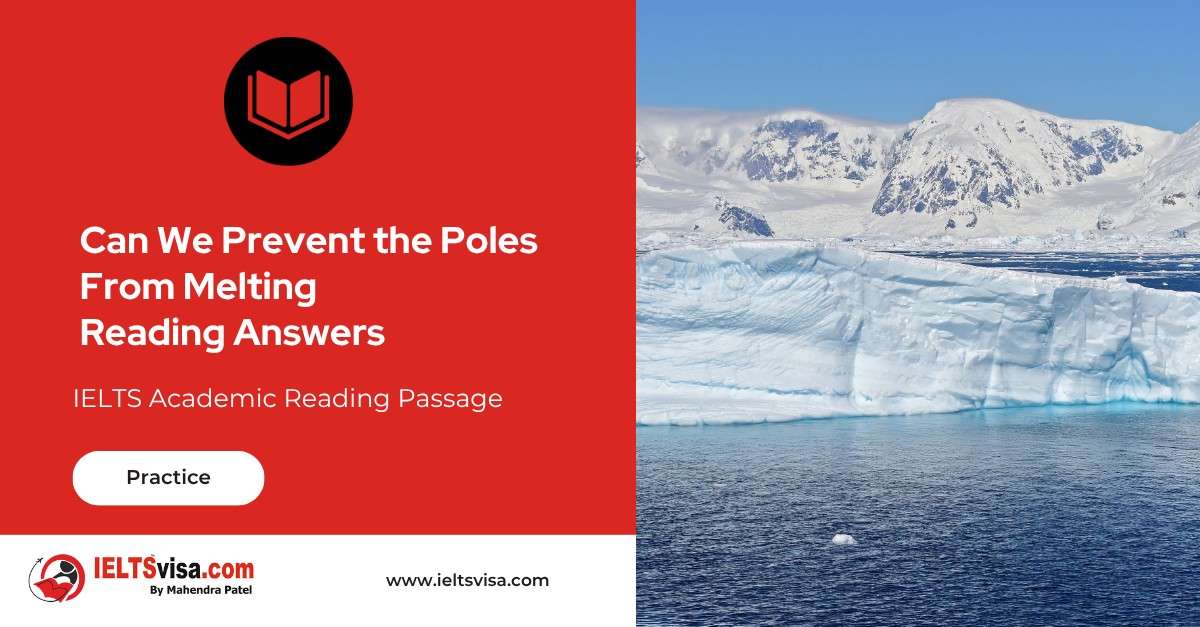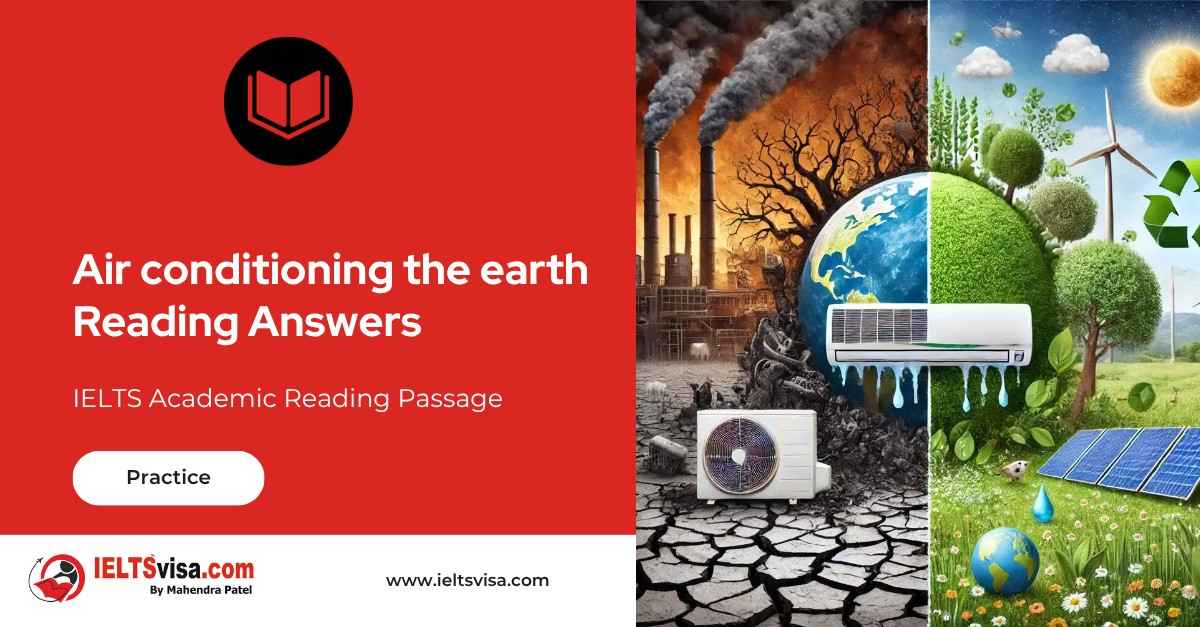Art In Iron And Steel Reading Answer
IELTS Academic Reading Passage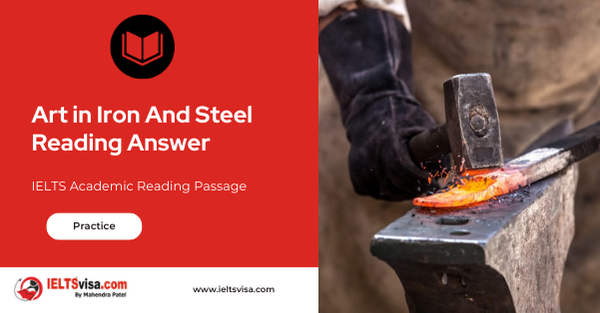
A
Works of engineering and technology are sometimes viewed as the antitheses of art and humanity. Think of the connotations of assembly lines, robots, and computers. Any positive values there might be in such creations of the mind and human industry can be overwhelmed by the associated negative images of repetitive, stressful, and threatened jobs. Such images fuel the arguments of critics of technology even as they may drive powerful cars and use the Internet to protest what they see as the artless and dehumanizing aspects of living in an industrialized and digitized society. At the same time, landmark megastructures such as the Brooklyn and Golden Gate bridges are almost universally hailed as majestic human achievements as well as great engineering monuments that have come to embody the spirits of their respective cities. The relationship between art and engineering has seldom been easy or consistent.
B
The human worker may have appeared to be but a cog in the wheel of industry, yet photographers could reveal the beauty of line and composition in a worker doing something as common as using a wrench to turn a bolt. When Henry Ford’s enormous River Rouge plant opened in 1927 to produce the Model A, the painter/photographer Charles Sheeler was chosen to photograph it. The world’s largest car factory captured the imagination of Sheeler, who described it as the most thrilling subject he ever had to work with. The artist also composed oil paintings of the plant, giving them titles such as American Landscape and Classic Landscape.
C
Long before Sheeler, other artists, too, had seen the beauty and humanity in works of engineering and technology. This is perhaps no more evident than in Coalbrookdale, England, where iron, which was so important to the industrial revolution, was worked for centuries. Here, in the late eighteenth century, Abraham Darby III cast on the banks of the Severn River the large ribs that formed the world’s first iron bridge, a dramatic departure from the classic stone and timber bridges that dotted the countryside and were captured in numerous serene landscape paintings. The metal structure, simply but appropriately called Iron Bridge, still spans the river and still beckons engineers, artists, and tourists to gaze upon and walk across it, as if on a pilgrimage to a revered place.
D
At Coalbrookdale, the reflection of the ironwork in the water completes the semicircular structure to form a wide-open eye into the future that is now the past. One artist’s bucolic depiction shows pedestrians and horsemen on the bridge, as if on a woodland trail. On one shore, a pair of well-dressed onlookers interrupts their stroll along the riverbank, perhaps to admire the bridge. On the other side of the gently flowing river, a lone man leads two mules beneath an arch that lets the towpath pass through the bridge’s abutment. A single boatman paddles across the river in a tiny tub boat. He is in no rush because there is no towline to carry from one side of the bridge to the other. This is how Michael Rooker was Iron Bridge in his 1792 painting. A colored engraving of the scene hangs in the nearby Coalbrookdale museum, along with countless other contemporary renderings of the bridge in its full glory and in its context, showing the iron structure not as a blight on the landscape but at the center of it. The surrounding area at the same time radiates out from the bridge and pales behind it.
E
In the nineteenth century, the railroads captured the imagination of artists, and the steam engine in the distance of a landscape became as much a part of it as the herd of cows in the foreground. The Impressionist Claude Monet painted man-made structures like railway stations and cathedrals as well as water lilies. Portrait painters such as Christian Schussele found subjects in engineers and inventors – and their inventions – as well as in the American founding fathers. By the twentieth century, engineering, technology, and industry were very well established as subjects for artists.
F
American-born Joseph Pennell illustrated many European travel articles and books. Pennell, who early in his career made drawings of buildings under construction and shrouded in scaffolding, returned to America late in life and recorded industrial activities during World War I. He is perhaps best known among engineers for his depiction of the Panama Canal as it neared completion and his etchings of the partially completed Hell Gate and Delaware River bridges.
G
Pennell has often been quoted as saying, “Great engineering is great art,” a sentiment that he expressed repeatedly. He wrote of his contemporaries, “I understand nothing of engineering, but I know that engineers are the greatest architects and the most pictorial builders since the Greeks.” Where some observers saw only utility, Pennell saw also beauty, if not in form then at least in scale. He felt he was not only rendering a concrete subject but also conveying through his drawings the impression that it made on him. Pennell called the sensation that he felt before a great construction project ‘The Wonder of Work”. He saw engineering as a process. That process is memorialized in every completed dam, skyscraper, bridge, or other great achievement of engineering.
H
If Pennell experienced the wonder of work in the aggregate, Lewis Hine focused on the individuals who engaged in the work. Hine was trained as a sociologist but became best known as a photographer who exposed the exploitation of children. His early work documented immigrants passing through Ellis Island, along with the conditions in the New York tenements where they lived and the sweatshops where they worked. Upon returning to New York, he was given the opportunity to record the construction of the Empire State Building, which resulted in the striking photographs that have become such familiar images of daring and insouciance. He put his own life at risk to capture workers suspended on cables hundreds of feet in the air and sitting on a high girder eating lunch. To engineers today, one of the most striking features of these photos, published in 1932 in Men at Work, is the absence of safety lines and hard hats. However, perhaps more than anything, the photos evoke Pennell’s “The Wonder of Work” and inspire admiration for the bravery and skill that bring a great engineering project to completion.
Questions 1-5
The Reading Passage has eight paragraphs A-H
Which paragraph contains the following information?
Write the correct letter A-H, in boxes 1-5 on your answer sheet.
1. Art connected with architecture for the first.
2. small artistic object and constructions built are put together.
3. the working condition were recorded by the artist as an exciting.
4. mention of one engineers’ artistic work on an unfinished engineering project.
5. Two examples of famous bridges which became the iconic symbols of those cities.
Questions 6-10
Use the information in the passage to match the people (listed A-F) with opinions or deeds below.
Write the appropriate letters A-F in boxes 6-10 on your answer sheet.
List of people
A. Charles Sheeler
B. Michael Rooker
C. Claude Monet
D. Christian Schussele
E. Joseph Pennell
F. Lewis Hine
6. who made a comment that concrete constructions have a beauty just as artistic processes created by engineers the architects
7. who made a romantic depiction of an old bridge in one painting
8. who produced art pieces demonstrating the courage of workers in the site
9. who produced portraits involving subjects in engineers and inventions and historical human heroes.
10. who produced a painting of factories and named them ambitiously
Questions 11-14
Complete the following summary of the paragraphs of Reading Passage
Using NO MORE THAN THREE WORDS from the Reading Passage for each answer.
Write your answers in boxes 11-14 on your answer sheet.
Iron bridge Coalbrookdale, England
In the late eighteenth century, as artists began to capture the artistic attractiveness incorporated into architecture via engineering and technology were captured in numerous serene landscape paintings. One good example, the engineer called 11…………………………… had designed the first iron bridge in the world and changed to using irons yet earlier bridges in the countryside were constructed using materials such as 12………………………………. and wood. This first Iron bridge which across the 13………………. was much significant in the industrial revolution period and it functioned for centuries. Numerous spectacular paintings and sculpture of Iron Bridge are collected and exhibited locally in 14…………………………….., showing the iron structure as a theme on the landscape.

Solution:Art in Iron and Steel Reading Answer
| 1. C | 8. F |
| 2. E | 9. D |
| 3. B | 10. A |
| 4. F | 11. Abraham Darby III |
| 5. A | 12. stone |
| 6. E | 13. river |
| 7. B | 14. Coalbrookdale Museum |
Review and Practice
- Regularly practice with IELTS reading samples and time yourself to get used to the pressure of the exam.
- Review your mistakes to understand where you went wrong and how to avoid similar errors in the future.
Our Books
Master IELTS Speaking Part 1
IELTS Writing Task 1 Book
IELTS Writing Task 2 Book
Art In Iron And Steel Reading Answer Explanation
| Question No | Question Types | Answer | Keywords | Supporting Sentence | Location of Keywords | Explanations |
|---|---|---|---|---|---|---|
| 1 | Write the correct letter | C | Iron Bridge, Engineers, Artist | Abraham Darby III cast the large ribs that formed the world’s first iron bridge on the banks of the Severn River in the late eighteenth century. The metal structure, simply but appropriately called Iron Bridge, still spans the river and beckons engineers, artists, and tourists to gaze upon and walk across it, as if on a pilgrimage to a revered place. | Paragraph 3 lines 6-7 | In accordance with the reading passage, Abraham Darby III casted the huge ribs that laid the foundation for the world’s first iron bridge on the banks of the Severn River in the late eighteenth century. |
| 2 | Write the correct letter | E | Railway Stations, Artists, Steam Engine | Railroads captivated the imagination of artists in the nineteenth century, and a distant steam engine became as much a feature of a landscape as a herd of cows in the foreground. Claude Monet, an Impressionist, depicted man-made structures such as train stations and churches, as well as water lilies. | Paragraph 5 lines 1-3 | It can be concluded from the reading passage that engineering, technology, and industry were all considered as artistic subjects. |
| 3 | Write the correct letter | B | Thrilling, Photograph, Artist | Sheeler was thrilled with the world’s largest automotive plant, which he considered the most exciting topic he had ever worked on. Oil paintings of the plant were also created by the artist, with titles such as American Landscape and Classic Landscape. | Paragraph 2 lines 4-5 | In accordance with the reading passage, it can be concluded that Sheeler was fascinated with the world’s largest car factory. The author addresses it as the most exciting part of the write-up. |
| 4 | Write the correct letter | F | Career, Constructions, Completion | Pennell, who began his career drawing scaffolded constructions, is likely best known among engineers for his depiction of the Panama Canal as it neared completion, as well as his etchings of the half-finished Hell Gate and Delaware River bridges. | Paragraph 6 lines 2-4 | Pennell is addressed as the individual who created early drawings of buildings under construction and encased in scaffolding early in his career, settled in America in the later part of his life. While in America, he documented several industrial activities during World War I. Thus, he became known as one of the renowned engineers. |
| 5 | Write the correct letter | A | Brooklyn Bridges, Golden Gate bridges, Achievements | The Brooklyn and Golden Gate bridges are widely regarded as magnificent human achievements as well as outstanding engineering monuments that have come to represent the spirit of their respective cities. | Paragraph 1 lines 6-7 | The Golden and Brooklyn Gate bridges are addressed as one of the finest results of human hardships. These are further addressed as the potential link between engineering and art, which have never been in a constant phase. |
| 6 | Write the appropriate letters | E | Engineering, Concrete, Art | “Wonderful engineering is great art,” Pennell has been quoted as saying. He thought he was not just recreating a concrete subject, but also transmitting the effect it produced on him through his drawings. | Paragraph 6 lines 1-4 | It can be concluded from the above reading passage that Pennell addressed engineering as a method. Every completed dam, skyscraper, bridge, or other great engineering project bears witness to this process. |
| 7 | Write the appropriate letters | B | Iron Bridge, Engraving, Glory | Pedestrians and horsemen, as though on a wooded trail, are seen on the bridge in one artist’s pastoral image. A pair of well-dressed bystanders on one bank take a break from their stroll along the riverbank, perhaps to admire the bridge. A lone man leads two mules beneath an arch that allows the towpath to pass through the bridge’s abutment on the other side of the softly flowing river. In his 1792 picture, Michael Rooker depicted Iron Bridge in this manner. | Paragraph 4 lines 7-8 | In paragraph 4 lines 7-10, in his 1792 painting, Michael Rooker portrays Iron Bridge. In the neighboring Coalbrookdale museum, a colored engraving of the image displays among many other depictions of the bridge in all its splendor and context. It depicts the iron construction not as a blight on the countryside but as its heart. |
| 8 | Write the appropriate letters | F | Photographer, Sociologist, Exploitation | Lewis Hine risked his own life to photograph workmen hung hundreds of feet in the air and eating lunch on a high girder. One of the most remarkable elements of these photographs, published in 1932 in Men at Work, to engineers today is the lack of safety lines and hard helmets. | Paragraph 8 line 2 | According to the passage, Lewis Hine mostly concentrated on individuals who were a part of the projects. Hine, by training, was a sociologist. However, he is mostly known as a photographer who was responsible for revealing child exploitation. |
| 9 | Write the appropriate letters | D | Imaginations, Artists, Engineering, Technology | Engineers and innovators — and their innovations — as well as the American founding fathers, were subjects for Christian Schussele. Engineering, technology, and industry were well-established as subjects for artists by the twentieth century. | Paragraph 5 lines 1-5 | Artists were enthralled by railroads, and a distant steam engine came to resemble a herd of cows in the foreground as well as other landscape elements. For portrait painters like Christian Schussele, subjects included engineers, inventors, and their works of art, as well as the American founding fathers. |
| 10 | Write the appropriate letters | A | Factory, Captured, Thrilling | Charles Sheeler, a painter, and the photographer was chosen to photograph it. Sheeler was enthralled with the world’s largest automotive plant, which he considered the most exciting topic he had ever worked on. Oil paintings of the plant were also created by the artist, with titles such as American Landscape and Classic Landscape. | Paragraph 2 lines 4-5 | Lines 4-5 of paragraph two Charles Sheeler decided to shoot it there. Sheeler was enthralled by the largest automobile plant in the world, which he regarded as the most exciting subject he had ever worked on. |
| 11 | Complete the following summary | Abraham Darby III | Timber, Bridges, Engineers | The enormous ribs that constituted the world’s first iron bridge were cast on the banks of the Severn River by Abraham Darby III, a startling contrast from the classic stone and timber bridges that littered the area and were portrayed in several calm landscape paintings. | Paragraph 3 line 4-7 sentence | In the third paragraph, lines 3–4 Abraham Darby III switched to employing irons and built the first iron bridge in history. |
| 12 | Complete the following summary | Stone | Engineers, Artist, Paintings | The first iron bridge was a striking contrast to the traditional stone and timber bridges that studded the region and were featured in several quiet landscape paintings. Iron Bridge is a simple but obvious term for types of steel. | Paragraph 3 lines 6-7 | In paragraphs 3, lines 3-4 Abraham Darby III developed the world’s first iron bridge and switched to using irons. |
| 13 | Complete the following summary | River | Captured, Landscape, Pilgrimage | The galvanized steel, renamed Iron Bridge, still crosses the river, tempting engineers, artists, and tourists to look at it and go across it. | Paragraph 3 lines 6-7 | On the Severn River’s banks, the first iron bridge was constructed. During the industrial revolution, the enormous ribs it produced were crucial and served for many generations. |
| 14 | Complete the following summary | Coalbrookdale Museum | Technology, Evident, Revolution | The round structure at Coalbrookdale is completed by the reflection of the ironwork in the water, like a wide-open eye into the future that is now the past. | Paragraph 3 Lines 1-3 | The iron building is portrayed as a landscape theme at the Coalbrookdale Museum, it is stated in lines 2-3 of paragraph 3. This is perhaps nowhere more evident than at Coalbrookdale, England, where iron mining has been going on for centuries and is so important to the industrial revolution. |
Practice IELTS Other Modules
IELTS Listening
The IELTS Listening test assesses how well you can understand spoken English in various contexts. It lasts about 30 minutes and is divided into four sections with a total of 40 questions. The listening tasks become increasingly difficult as the test progresses.
IELTS Academic Reading
The IELTS Academic Reading section assesses your ability to understand and interpret a variety of texts in academic settings. It is designed to evaluate a range of reading skills, including skimming for gist, reading for main ideas, reading for detail, understanding inferences, and recognizing a writer's opinions and arguments.
IELTS Speaking
The IELTS Speaking test assesses your ability to communicate in English on everyday topics. It lasts 11-14 minutes and consists of three parts: introduction, cue card, and a discussion based on the cue card topic.
IELTS General Reading
IELTS General Reading tests your ability to understand and interpret various types of texts. Here are some key areas and types of content you can expect to encounter in the reading section, along with tips for effective preparation.
IELTS Academic Writing Task 1
In IELTS Academic Writing Task 1, you are presented with a visual representation of information, such as graphs, charts, tables, or diagrams, and you are required to summarize, compare, or explain the data in your own words.
IELTS General Writing Task 1
In IELTS General Writing Task 1, you are required to write a letter based on a given situation. The letter can be formal, semi-formal, or informal, depending on the prompt. Here’s a breakdown of the key components to include in your letter
IELTS Academic Writing Task 2
In IELTS Academic Writing Task 2, you are required to write an essay in response to a question or topic. Here’s a guide to help you understand the essential elements of this task
IELTS Exam Tips
To succeed in the IELTS exam, practice regularly, familiarize yourself with the test format, improve your vocabulary, develop time management skills, and take mock tests to build confidence.
Grammer for IELTS
Grammar is the foundation of effective communication in English. Understanding tense usage, subject-verb agreement, and sentence structure enhances clarity and coherence in writing and speaking.
Vocabulary for IELTS
Vocabulary plays a crucial role in the IELTS (International English Language Testing System) exam, especially in the Speaking and Writing sections. Here’s an overview of why vocabulary is important and how it impacts your performance
RECENT IELTS SAMPLES QUESTIONS AND ANSWERS
Walking with dinosaurs
Peter L. Falkingham and his colleagues at Manchester University are developing techniques that...
Money as the Unit of Amount Reading Answers
The most difficult aspect of money to understand is its function as a unit of account. In...
WEATHERING IN THE DESERT
In the deserts, as elsewhere, rocks at the earth's surface are changed by weathering, which...
Nature on Display in American Zoos
The first zoo in the United States opened in Philadelphia in 1874, followed by the Cincinnati...
Can We Prevent the Poles From Melting
Such is our dependence on fossil fuels, and such is the volume of carbon dioxide we have...
Air conditioning the earth reading answers
The circulation of air in the atmosphere is activated by convection, the transference of heat...

